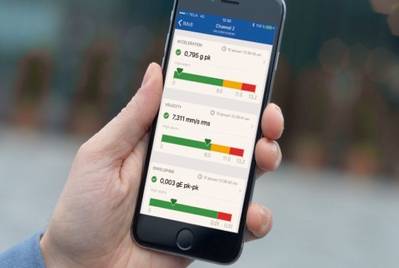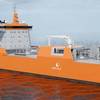Health Monitoring System Keeps an Eye on the Fleet
When you’re out at sea, the last thing you need is a major breakdown. In such a case, it would mean being towed back to dry dock for expensive repairs – and that’s something that hard-pressed shipping companies can do without. One way around this is to keep a constant watch over onboard assets condition, and SKF has helped one shipping customer to do this – introducing condition monitoring to its ship, with plans to extend the service to other vessels in the fleet.
Condition monitoring is a vital resource in any industry, as it helps to protect assets from sudden failure. It uses an array of sensors to monitor machinery and detect potential problems at an early stage. One of the most widely used methods is to use vibration monitoring to assess the ‘health’ of the asset.
In this case, serious problems with the bearings on a reduction gearbox had caused extensive damage. With SKF’s help, the customer introduced condition monitoring onto two ships in its fleet for early detection of emerging problems.
Condition monitoring is a good example of a technique that has many hidden layers. Beyond the visible hardware, there is a network of sensors gathering information. The information is collected and then transmitted to a central storage or “cloud”, where it is analyzed by SKF condition monitoring experts – any findings are reported with clear recommended actions to the crew. In this case, bearing and gear mesh fault signals from the gearbox and generator were monitored.
Health monitor
Online Systems IMx-8 as the ‘gateway’ to the condition monitoring service. The system has been developed as a compliment for the earlier SKF Multilog Online Systems IMx-S, and boasted with a number of improvements.
Firstly, it now has eight channels rather than 16 or 32. This may sound like a retrograde step, but it is actually more suited to this type of application: The Multilog Online Systems IMx-8 can be installed closer to the application being monitored, meaning less cables and simpler installation. It is as well more compact – as it will fit in an existing cabinet rather than one of its own. Furthermore it is rugged for marine use, meeting the stringent environmental requirements set by the classification societies as part of type approval process.
Its compactness makes it ideal for space-restricted applications such as small size thrusters or reduction gearboxes – where instruments for practical reasons often need to be located as close as possible to the monitored machinery to reduce cabling.
At the same time, the SKF Multilog Online Systems IMx-8 boasts a vastly expanded memory of 4GB. This allows it to retain huge amounts of data, which is useful in the event of Ethernet connections being lost to the cloud. Furthermore the system can be powered via an Ethernet cable (PoE), simplifying the installation.
Setting up the system is also much easier than before: rather than going via a serial connection, it is now done via a stylish APP, which helps service engineers and crew to view data instantly.
SKF Multilog Online Systems IMx-8 is affordable and easy to use – and as such is an ideal way to help shipping companies take their first step into condition monitoring. While it is initially targeted at the marine and offshore sectors, SKF expects it to find use in other industrial sectors as well.
In the cloud
In normal operating machine conditions, raw data is sent to the cloud and analyzed at SKF’s Remote Diagnostics Centre (RDC). Here, SKF condition monitoring experts are on hand to monitor and interpret the data – to assess the machine health. Under the service, SKF delivers event reports in case of changes in the asset condition and complete machine analyses as agreed with the customer.
In the current pilot study – which began in November 2016 – it monitors the health of a gearbox– taking vibration data at key locations in order to check for problems, such as bearing and gear mesh wear. With so many failure modes, it is vital to have application knowledge to keep tabs on every part of it. The system is also capable to identify unbalance and misalignment problems between the generator and the shaft which further enhance the benefits to the user.
Working with SKF the customer can excel in its maintenance maturity process, not only by detecting possible bearing and gear mesh problems at an early stage but also better plan for the maintenance repair, meaning less stress and cost for spare parts. To further increase the savings, the customer can go from planned to condition based maintenance performing maintenance based on the asset condition and extending time between maintenance.
Ultimately, this kind of condition monitoring system is all about improving the reliability of the vessel – a key aspect in the attempt to run a fleet more efficiently. Yet it must be remembered that this type of condition monitoring system is about more than the onboard hardware and sensors. Its real power comes from the RDC service that analyses the data using the application knowledge, gained over the years – before making timely, cost-saving recommendations.











